Ayahuasca dangers: Every day, more and more ayahuasca tourists arrive in Iquitos, Peru, seeking spiritual enlightenment or a psychedelic experience first made popular by William Burroughs and the Beatniks in the 1960s. Unfortunately, some well-paid “shamans” lack the experience or understanding of the powerful, dangerous, and sacred botanical brews used for thousands of years for healing and divination. And the gringos-on-holiday often get over their heads in the wilds of the Amazon.
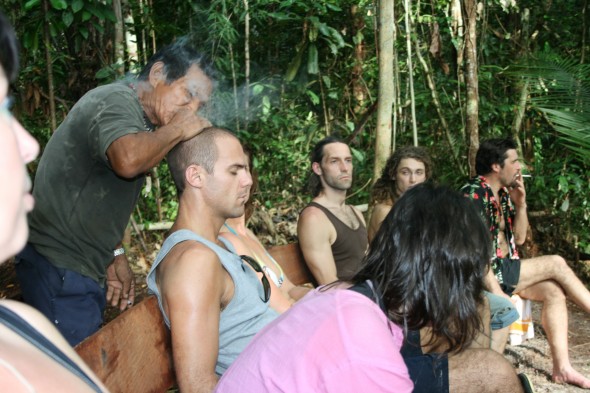

The Dark Side of Ayahuasca
By Kelly Hearn, Published in Men’s Journal
Kyle Nolan spent the summer of 2011 talking up a documentary called ‘Stepping Into the Fire,’ about the mind-expanding potential of ayahuasca. The film tells the story of a hard-driving derivatives trader and ex-Marine named Roberto Velez, who, in his words, turned his back on the “greed, power, and vice” of Wall Street after taking ayahuasca with a Peruvian shaman. The film is a slick promotion for the hallucinogenic tea that’s widely embraced as a spirit cure, and for the Shimbre Shamanic Center, the ayahuasca lodge Velez built for his guru, a potbellied medicine man called Master Mancoluto. The film’s message is that we Westerners have lost our way and that the ayahuasca brew (which is illegal in the United States because it contains the psychedelic compound DMT) can set us straight.
Ayahuasca, known also as yagé or caapi, is the vision vine, the vine of the soul, the most curious and celebrated hallucinogenic plant of the Amazon. The drug is prepared by pounding the woody stem of a liana [Banisteriopsis caapi] and boiling it with various admixtures. The Indians see the plant as a magical intoxicant that can free the soul, allowing it to wander in mystical encounters with ancestors and animal spirits. Some users maintain that collective visions occur and that under the influence it is possible to communicate across great distances in the forest. When the active ingredient harmaline was first isolated, Colombian scientists called it telepathine.” — Wade Davis in “One River, Explorations and Discoveries in the Amazon Rainforest.”

Watch this video on YouTube
Stepping into the Fire, a documentary (2011) by Ross Evison, Roberto Velez and Ouroboro.
Last August, 18-year-old Nolan left his California home and boarded a plane to the Amazon for a 10-day, $1,200 stay at Shimbre in Peru’s Amazon basin with Mancoluto – who is pitched in Shimbre’s promotional materials as a man to help ayahuasca recruits “open their minds to deeper realities, develop their intuitive capabilities, and unlock untapped potential.” But when Nolan – who was neither “flaky” nor “unreliable,” says his father, Sean – didn’t show up on his return flight home, his mother, Ingeborg Oswald, and his triplet sister, Marion, went to Peru to find him. Initially, Mancoluto, whose real name is José Pineda Vargas, told them Kyle had packed his bags and walked off without a word. The shaman even joined Oswald on television pleading for help in finding her son, but the police in Peru remained suspicious. Under pressure, Mancoluto admitted that Nolan had died after an ayahuasca session and that his body had been buried at the edge of the property. The official cause of death has not yet been determined.
In taking “Carpi” [Caapi] the Hupda [or Maku People] firstly see “how the world moves,” as they say, which means the reason for the creation of the world, how it was done, and the laws which govern it’s workings. Caapi reveals the “movement” of all things, why they exist, and the role they play in the great cosmic drama. Under the effects of Caapi everything acquires life. Even a rock or a piece of firewood reveals it’s true identity. Everything appears as if it were human and that is the hidden aspect of being which is revealed to who drinks Caapi. To obtain knowledge, to “be intelligent” and have “good vision,” discernment, it is necessary to take Caapi, to learn from it the true form and meaning of all things. — Pedro Fernandes Leite da Luz, Brazilian Anthropologist and Ethnobotanist
STORY: Terence McKenna: On Shamanic Schizophrenia and Cultural Healing
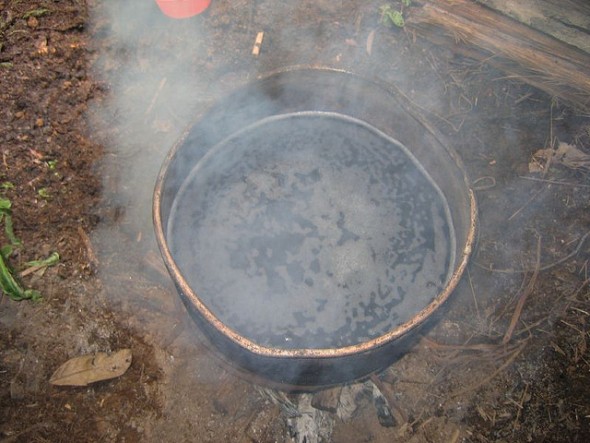

Pilgrims like Nolan are flocking to the Amazon in search of ayahuasca, either to expand their spiritual horizons or to cure alcoholism, depression, and even cancer, but what many of them find is a nightmare. Still, the airport in Iquitos is buzzing with ayahuasca tourism. Vans from shamanic lodges pick up psychedelic pilgrims from around the world, while taxi drivers peddle access to Indian medicine men. “It reminds me of how they sell cocaine and marijuana in Amsterdam,” one local said. “Here, it’s shamans and ayahuasca.”
Devotees talk about ayahuasca’s cathartic and life-changing power, but there is a dark side to the tourism boom as well. With money rolling in and lodges popping up across Peru’s sprawling Amazon, a new breed of shaman has emerged – and not all of them can be trusted with the powerful drug.
Deaths like Nolan’s are uncommon, but reports of molestation, rape, and negligence at the hands of predatory and inept shamans are not. In the past few years alone, a young German woman was allegedly raped and beaten by two men who had administered ayahuasca to her, two French citizens died while staying at ayahuasca lodges, and stories persist about unwanted sexual advances and people losing their marbles after being given overly potent doses.
Horrifying and Blissful Natural Dreaming and Space Time Travel
The age of ayahuasca as purely a medicinal, consciousness-raising pursuit seems like a quaint and distant past. A powerful psychedelic, DMT is a natural compound found throughout the plant kingdom and in mammals (including humans). Scientists don’t know why it’s so prevalent in the world, but studies suggest a role in natural dreaming. DMT doesn’t work if swallowed alone, thanks to an enzyme in the gastrointestinal system that breaks it down. In a feat of prehistoric chemistry, Amazonian shamans fixed that by boiling two plants together – the ayahuasca vine and a DMT-containing shrub called chacruna – which shuts down the enzyme and allows the DMT to slip through the gut into the bloodstream.
“Yage is space time travel. The room seems to shake and vibrate with motion. The blood and substance of many races, Negro, Polynesian, Mountain Mongol, Desert Nomad, Polyglot Near East, Indian — new races as yet unconceived and unborn, combinations not yet realized passes through your body (stasis and death in closed mountain valleys where plants sprout out of your cock and vast crustaceans hatch inside and break the shell of the body), across the Pacific in an outrigger canoe to Easter Island. The Composite City where all human potentials are spread out in a vast silent market.” — William S. Burroughs in “The Yage Letters”
Ayahuasca almost always induces vomiting before the hallucinogenic odyssey begins. It can be both horrifying and strangely blissful. One devotee described an ayahuasca trip as “psychotherapy on steroids.” But for all the root’s spiritual and therapeutic benefits, the ayahuasca boom is as wild and unmanageable as the jungle itself. One unofficial stat floating around Iquitos says the number of arriving pilgrims has grown fivefold in two years. Roger Rumrrill, a journalist who has written 25 books on the Amazon region, including several on shamanism, told me there’s “a corresponding boom in charlatans – in fake shamans, who are targeting foreigners.”
Few experts blame the concoction itself. Alan Shoemaker, who organizes an annual shamanism conference in Iquitos, says, “Ayahuasca is one of the sacred power plants and is completely non-addictive, has been used for literally thousands of years for healing and divination purposes…and dying from overdose is virtually impossible.”
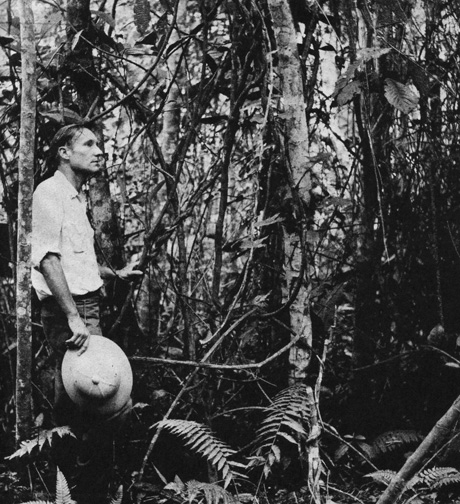

Still, no one monitors the medicine men, their claims, or their credentials. No one is making sure they screen patients for, say, heart problems, although ayahuasca is known to boost pulse rates and blood pressure. (When French citizen Celine René Margarite Briset died from a heart attack after taking ayahuasca in the Amazonian city of Yurimaguas in 2011, it was reported she had a preexisting heart condition.) And though many prospective ayahuasca-takers – people likely to have been prescribed antidepressants – struggle with addiction and depression, few shamans know or care to ask about antidepressants like Prozac, which can be deadly when mixed with ayahuasca.
Reports suggested that a clash of meds killed 39-year-old Frenchman Fabrice Champion, who died a few months after Briset in an Iquitos-based lodge called Espiritu de Anaconda (which had already experienced one death and has since changed its name to Anaconda Cosmica). No one has been charged in either case.
Nor is anyone monitoring the growing number of lodges offering to train foreigners to make and serve the potentially deadly brew. Rumrrill scoffs at the idea. “People study for years to become a shaman,” he said. “You can’t become one in a few weeks….It’s a public health threat.”
Disciples of ayahuasca insist that a shaman’s job is to control the movements of evil spirits in and out of the passengers, which in layman’s terms means keeping people from losing their shit. An Argentine tourist at the same lodge where Briset died reportedly stabbed himself in the chest after drinking too much of the tea. I met a passenger whose face was covered in thick scabs I assumed were symptoms of an illness for which he was being treated. It turns out he’d scraped the skin off himself during an understatedly “rough night with the medicine.” Because of ayahuasca’s power to plow through the psyche, many lodges screen patients for bipolar disorders or schizophrenia. But one local tour guide told me about a seeker who failed to disclose that he was schizophrenic. He drank ayahuasca and was later arrested – naked and crazed – in a public plaza. Critics worry that apprentice programs are churning out ayahuasqueros who are incapable of handling such cases.
To drink Caapi [among the Hupda-Maki] is also thought of as a preventative medicine, turning the blood of the drinker bitter, thus making him immune to any external aggression. — Pedro Fernandes Leite da Luz
Common are stories of female tourists who, under ayahuasca’s stupor, have faced sexual predators posing as healers. A nurse from Seattle says she booked a stay at a lodge run by a gringo shaman two hours outside Iquitos. When she slipped into ayahuasca’s trademark “state of hyper-suggestibility,” things got weird. “He placed his hands on my breast and groin and was talking a lot of shit to me,” she recalls. “I couldn’t talk. I was very weak.” She said she couldn’t confront the shaman. During the next session, he became verbally abusive. Fearing he might hurt her, she snuck off to the river, a tributary of the Amazon, late that night and swam away. She was lucky. In 2010, a 23-year-old German woman traveled to a tiny village called Barrio Florida for three nights of ayahuasca ceremonies. She ended up raped and brutally beaten by a “shaman” and his accomplice, who were both arrested. Last November, a Slovakian woman filed charges against a shaman, claiming she’d been raped during a ceremony at a lodge in Peru.
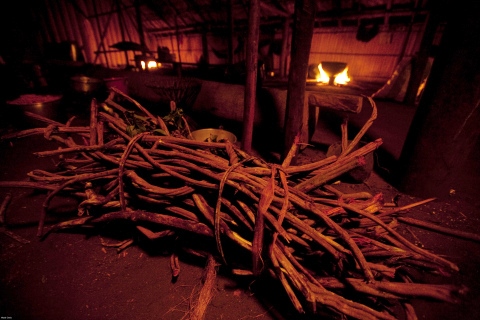

Mixing with the “Witchcraft Plant”
Even more troubling than ayahuasca is toé, a “witchcraft plant” that’s a member of the nightshade family. Also called Brugmansia, or angel’s trumpet [a datura relative], toé is known for its hallucinogenic powers. Skilled shamans use it in tiny amounts, but around Iquitos, people say irresponsible shamans dose foreigners with it to give them the Disneyland light shows they’ve come to expect. But there are downsides, to say the least.
“Toé,” warns one reputable Iquitos lodge, “is potentially very dangerous, and excessive use can cause permanent mental impairment. Deaths are not uncommon from miscalculated dosages.” I heard horror stories. One ayahuasca tourist said, “Toé is a heavy, dark plant that’s associated with witchcraft for a reason: You can’t say no. Toé makes you go crazy. Some master shamans use it in small quantities, but it takes years to work with the plants. There’s nothing good to come out of it.”
“Every tree, every plant, has a spirit. People may say that a plant has no mind. I tell them that a plant is alive and conscious. A plant may not talk, but there is a spirit in it that is conscious, that sees everything, which is the soul of the plant, its essence, what makes it alive. I feel a great sorrow when trees are burned, when the forest is destroyed. I feel sorrow because I know that human beings are doing something very wrong. When one takes ayahuasca one can sometimes hear how the trees cry when they are going to be cut down. They know beforehand, and they cry.”-– Pablo César Amaringo, retired Peruvian ayahuasquero
STORY: Chumash Sky and Earth Deities and Cosmological Rock Art
Another visitor, an engineer from Washington, D.C., blames toé for his recent ayahuasca misadventure. He learned about ayahuasca on the internet and booked a multi-night stay at one of the region’s most popular lodges. By the second night, he felt something was amiss. “When the shaman passed me the cup that night, he said, ‘We’re going to put you back together.’ I knew something was wrong. It was unbelievably strong.” The man says it hit him like a wave. “All around me, people started moaning. Then the yells and screaming started. Soon, I realized that medics were coming in and out of the hut, attending to people, trying to calm them down.” He angrily told me he was sure, based on hearing the bad trips of others who’d been given the substance, they had given him toé. “Ayahuasca,” he says, “should come with a warning label.”
Kyle’s father, Sean, suspects toé may have played a part in his son’s death, but he says he’s still raising the money he needs to get a California coroner to release the autopsy report. Mancoluto couldn’t be reached for comment, but his former benefactor, the securities trader Roberto Velez, now regrets his involvement with Mancoluto. “The man was evil and dangerous,” he says, “and the whole world needs to know so that no one ever seeks him again.” Some of Mancoluto’s former patients believe his brews included toé and have taken to the internet, claiming his practices were haphazard. (He allegedly sat in a tower overseeing his patients telepathically as they staggered through the forest.) One blog reports seeing a client “wandering out of the jungle, onto the road, talking to people who weren’t there, waving down cars, smoking imaginary cigarettes, and his eyes actually changed color, all of which indicated a high quantity of Brugmansia in Mancoluto’s brew.”
Shoemaker says that even though the majority of ayahuasca trips are positive and safe, things have gotten out of hand. “Mis-dosing with toé doesn’t make you a witch,” he says. “It makes you a criminal.” Velez, whose inspirational ayahuasca story was the focus of the film that sparked Kyle Nolan’s interest, is no longer an advocate. “It’s of life-and-death importance,” he warns, “that people don’t get involved with shamans they don’t know. I don’t know if anyone should trust a stranger with their soul.”
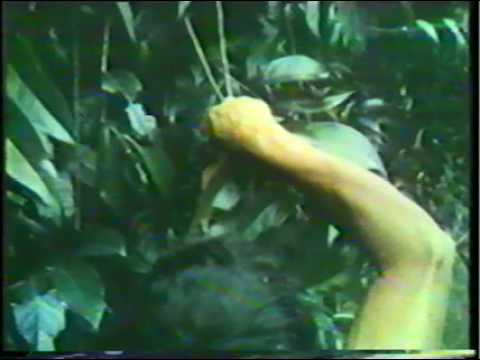
Watch this video on YouTube
William S. Burroughs narrates a short piece on yagé.
Updated 9 February 2021









Roberto I imagine after what happened to kyle ; you’ll never even return to Peru.
I have to tell you , that while watching your documentary I couldn’t wait for it to end because I wanted the same healing you described for yourself. That fact that your vision to build a center that would allow others to experience the same healing you had has been destroyed is so unfortunate . I have looked for you online and you are no where to be found. This is understandable. It is my hope that you will overcome this tragic connection and resume to fulfill your vision . That being a place for others to heal. You have stumbled by get up now and continue with people you know have the same vision .
It can happen here in the USA. I attended one ceremony with a shaman named Pluma Bronco Jeff Jenkins and had the same exact experience. It can happen in any county with any shaman. My advice is stay with a Christ he will save you
From what?
Pingback: Renaissance of Psychedelics in Psychiatry | WilderUtopia.com
This is an invitation for anyone who would like to learn more about ayahuasca to listen to this podcast.
http://www.matrixmasters.net/salon/2007/04/podcast-089-%E2%80%93-%E2%80%9Cayahuasca-diet-rituals-and-powers%E2%80%9D/
You may also visit my web site for more radio, video, print and podcast interviews.
Best,
Matt
Thank you, don Mateo!! Everyone, please check out his considerable works at MattPallamary.com/
Pingback: "Embrace of the Serpent" Film: Ethnobotany as Society's Healer | WilderUtopia.com
“””One blog reports seeing a client “wandering out of the jungle, onto the road, talking to people who weren’t there, waving down cars, smoking imaginary cigarettes, and his eyes actually changed color, all of which indicated a high quantity of Brugmansia in Mancoluto’s brew.””””
=>>> am pretty sure that was me – that part was the “colorful” one compare to the rest of the shit i have seen there.. getting lost in middle of the night for hours without being able to find my hut being chased my snakes and jaguars. Juts greatefull to be alive when i read this article
If you want to do it in a very safe, legal and medically licensed environment, go to Rythmia Life Advancement Centre in Costa Rica. Gerard Powell is the CEO and most amazing American who has thrown his old multi-millionaire lifestyle overboard and dedicated himself to running this 5 star retreat in Guanacasta. I visited a year ago and it really opened me up in a gentle and extremely positive way. He has guest shamans who work there on rotation, some of them are well known but all are vetted for their integrity and the centre is very secure. I want to go back there one day, when I have the money. It’s not cheap but it’s worth paying for all the add ons like massage, colonics, medical testing, spiritual advancement talks and yoga, plus aftercare in luxury and beautiful surrounds with the most amazing organic food ever.